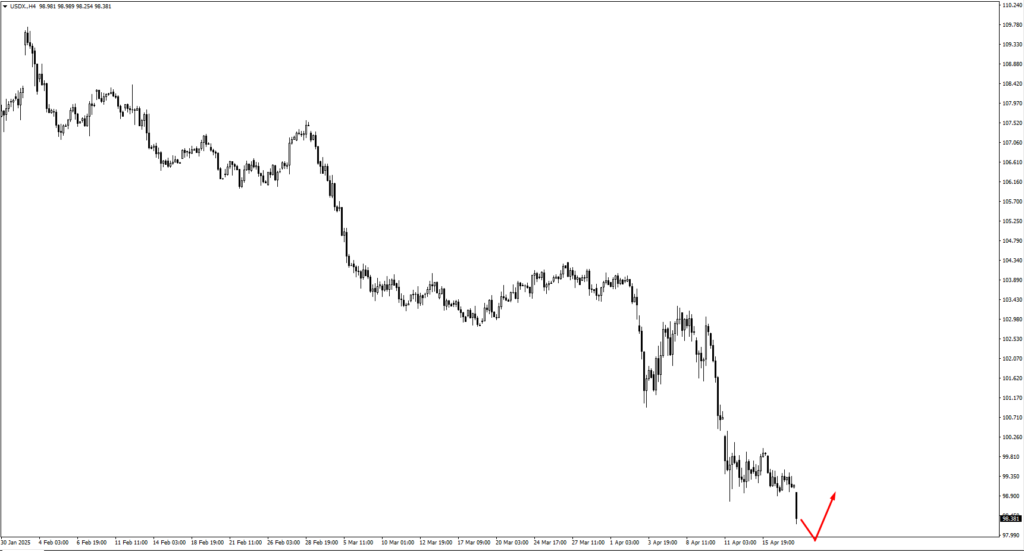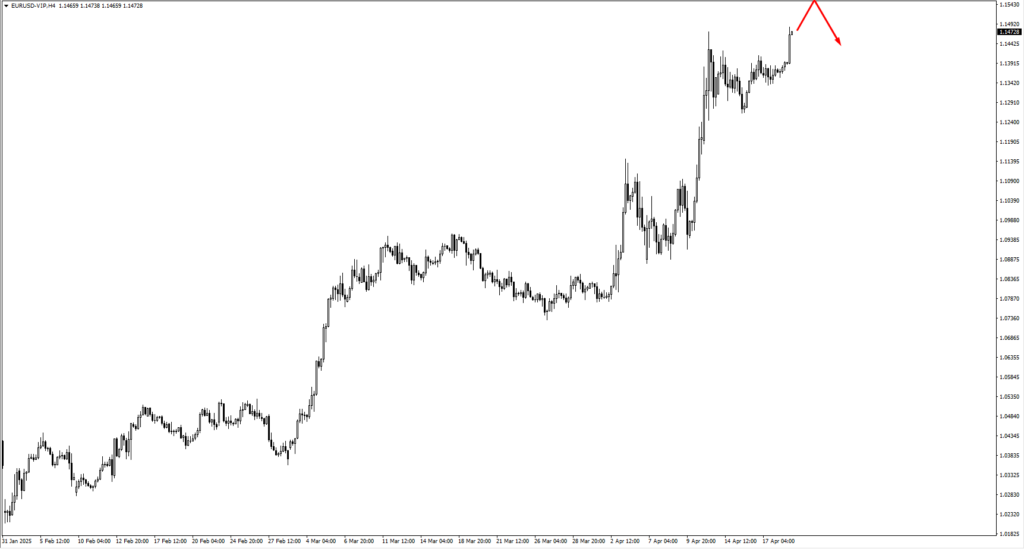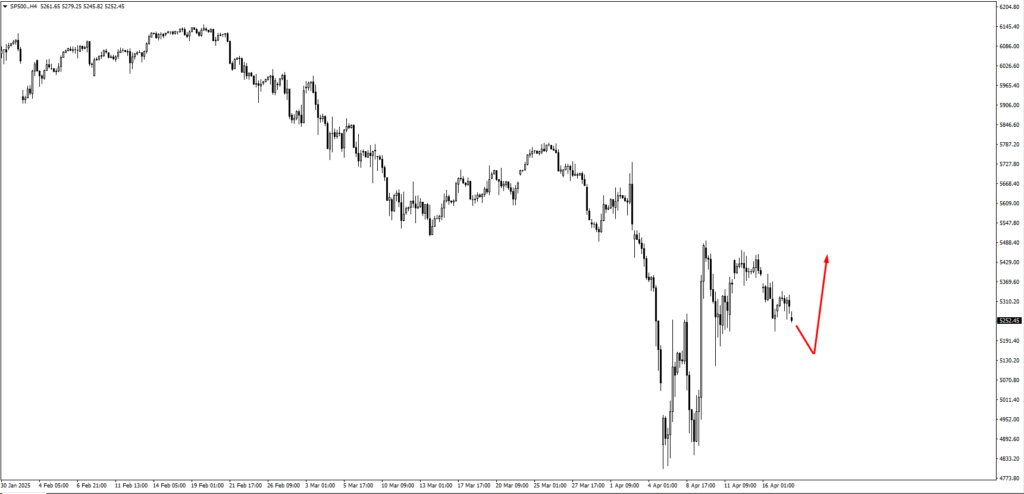
Wall Street doesn’t panic without a reason. And right now, it’s showing clear signs of stress. The U.S. economy isn’t sitting comfortably despite what politicians or pundits might say. Volatility has surged, corporate earnings are sliding, and growth has started to contract. The data isn’t screaming “recession” yet—but it’s raising its voice.
Let’s start with the S&P 500. In just a few weeks between mid-March and late March, it rallied from 5509 to 5790. That kind of optimism doesn’t come out of nowhere. Traders were hopeful—until President Donald Trump dropped his “Liberation Day” tariffs. The announcement caught everyone off guard. Markets dropped hard. Then they bounced after news of a 90-day pause. Then dropped again when uncertainty returned. Then surged when Trump confirmed the pause. It was a wild ride. The NASDAQ posted a record-breaking one-day gain of 1857.06 points. But that kind of movement isn’t healthy. It signals nerves, not confidence.
Meanwhile, the Federal Reserve is sitting tight. Jerome Powell hasn’t moved interest rates and doesn’t plan to until the picture becomes clearer. With new tariffs adding pressure to both inflation and supply chains, the Fed is stuck. Cut rates too soon, and inflation could flare up again. Hold them too high, and growth could stall further. It’s a delicate balance. And if inflation rises just as the economy slows—a very real possibility right now—we could end up in stagflation, a painful mix of stagnant growth and rising prices.
Consumers are already pulling back. The University of Michigan’s Consumer Sentiment Index fell by 11% in April. That’s the fourth straight drop. And it’s not just one group feeling it. The decline cut across political beliefs, income levels, and education backgrounds. Americans everywhere are getting nervous about their job security. And when people worry about jobs, they spend less. When they spend less, the economy slows.
Manufacturing tells a similar story. The Empire State Manufacturing Survey shows current conditions at -8.1%. Future expectations dropped even further to -7.4%. Those numbers are some of the worst we’ve seen in over 20 years. Worse than the 2008 financial crisis. Worse than the early months of COVID-19. The only time expectations were lower was right after the September 11 attacks. That’s a clear warning from the industrial side of the economy.
Companies are bracing for tighter times. Earnings revisions for S&P 500 companies have fallen 48%, according to Bloomberg. That’s the sharpest drop since April 2020. Back then, the world was shutting down. Today, it’s uncertainty—driven by tariffs and a shaky growth outlook—that’s eating into profit forecasts. When companies start cutting expectations this hard, they’re usually preparing for leaner quarters ahead.
The Atlanta Fed’s GDPNow model expects a -2.3% contraction for Q1 2025. Yes, some of that might be due to companies rushing gold back into the U.S. before tariffs kicked in—an odd blip that distorted the trade deficit. And yes, inventories might tick that number back up in the next revision. But even adjusting for those factors, the economy is slowing down. From a steady 3% annual pace over the past two years, growth has now slumped to a projected 0.3%, according to a CNBC survey. That’s barely crawling.
Bond markets are flashing a familiar pattern, too. The yield curve—the difference between the 10-year and 2-year Treasury yields—has steepened after previously inverting. History shows that every U.S. recession since 1980 has been preceded by this exact setup. It happens when the Fed prepares to cut rates in the face of slowing growth. And here we are again.
Still, we see that the labor market holds the line—for now. Unemployment sits at 4.2%, and weekly jobless claims remain steady. The Fed even pointed to jobless claims as one of the best early indicators of a recession. Right now, that number hasn’t moved. That’s a good sign. But it’s also the last thing holding the recession wolves at bay. If layoffs start ticking up, everything else could start to slide faster.
It’s true that the U.S. isn’t in a full-blown recession yet. But the economy is softening—and it’s doing so across multiple fronts. Growth is cooling. Confidence is slipping. Earnings are falling. And warning signs are piling up. Unless we see a clear shift in policy or a retreat from the current trade tensions, the risk of a recession this year remains high. It might not be deep, but it could be drawn out. Traders, investors, and policymakers will need to tread carefully in the months ahead.
Market Movements This Week
The week ending April 21 has been anything but quiet for the global markets. Despite a calendar light on high-impact economic news, asset prices continued to react to underlying geopolitical tensions, U.S. recession risk, and fragile consumer and business sentiment. Many major pairs and assets now hover around key technical zones, with traders watching closely for confirmation before committing to directional trades.
The U.S. Dollar Index (USDX) is beginning to soften after recent strength, with traders closely watching 98.10 and 97.95 for bullish interest should price drift lower. If the dollar regains upward momentum, any approach toward 102.40 will be scrutinized for signs of reversal or continuation. This week, the dollar’s path remains closely tied to risk sentiment and expectations around Federal Reserve policy.
In the EUR/USD pair, bullish setups may emerge if price retreats to 1.1210, while a move upward could encounter resistance near 1.1580. Market participants are eyeing Wednesday’s Flash PMI prints, which could inject short-term volatility depending on whether European data confirms weakening momentum.
GBP/USD has climbed into a zone of interest, with 1.3370 marking the key resistance to monitor. If the level fails to hold, price may briefly break above the 1.34336 swing high before facing renewed selling pressure. Sterling remains highly reactive to signals from the Bank of England, especially as rate cut speculation intensifies.
USD/JPY is showing weakness, drifting lower with a possible test of the 139.572 swing low on the horizon. However, analysts advise caution—further selling may be limited in the short term. Should the pair reverse, 146.60 stands out as a zone to gauge for potential rejection or momentum continuation.
For USD/CHF, price is currently hovering near recent swing lows, but traders are advised to avoid selling at this point. A bounce is anticipated, and if it plays out, 0.8410 will be the key level where bearish price action may re-emerge.
In the commodity currencies, AUD/USD looks poised to inch higher. Traders are watching 0.6415 for a reaction, with expectations of a pullback before any renewed bullish momentum. Meanwhile, NZD/USD fell from the previously watched 0.6000 zone, but the move lacked follow-through. Price is expected to revisit this level again—any fresh reaction there could reveal the next directional clue.
USD/CAD has registered a new swing low, though it hasn’t yet tested the 1.3760 demand zone. If it rebounds from current levels, 1.4140 becomes the critical resistance to watch for potential bearish setups. Oil price fluctuations will likely continue to influence the loonie’s performance throughout the week.
USOil (Crude) remains highly reactive to geopolitical risk. Should price dip, 61.00 is the key level for bullish setups. If crude rises from there, expect sellers to appear around 66.10. But if trade tensions between the U.S. and China escalate, analysts warn that crude could fall sharply, potentially testing 53.00.
Gold (XAU/USD) is back at its all-time high, drawing attention but also caution. Analysts warn against chasing the rally, especially with trade negotiations between the U.S. and China still in flux. If tensions ease, gold could retreat, but if uncertainty continues, a push toward 3430 remains on the table.
The S&P 500 (SPX) appears to be consolidating. A pullback to 5060 would be watched for bullish interest, while any move higher may meet resistance at 5610. Equities are currently walking a tightrope between weaker macro data and earnings season surprises.
Bitcoin (BTC) is showing signs of bullish momentum, but it needs to build more structure before direction becomes clear. Should price break through the 88,763.52 high, the next upside zone to monitor is 92,280. As always, crypto’s direction will depend heavily on liquidity and broader market appetite for risk.
Finally, Natural Gas (NATGAS) continues to trend lower. Bulls may step in if price tests 3.05, 2.95, or 2.80—zones that have previously offered support. However, any meaningful rally will likely hinge on upcoming weather patterns and storage reports.
This week’s market behavior underscores a common theme: uncertainty is tightening the zones, compressing volatility until the next breakout. Across FX, commodities, and crypto, traders are choosing caution—waiting for conviction before stepping back in. With PMI prints and central bank speeches on deck mid-week, the next move could come fast.
Key Events This Week
Market activity during Asian and European hours is expected to remain muted, unless breaking news stirs volatility. Traders will likely use the early part of the week to position ahead of Wednesday’s heavier data flow.
The real action kicks off on Wednesday, April 23, when a series of flash PMI readings are due from the Eurozone, United Kingdom, and the United States. In Germany, the Flash Manufacturing PMI is expected to slip to 47.5, down from 48.3, while the Flash Services PMI is projected at 50.3, slightly below the prior 50.9. These figures suggest weakening momentum in Europe’s largest economy. Traders will be monitoring EUR/USD closely for a corrective move if the data disappoints.
Across the Channel, the UK’s Flash Manufacturing PMI is forecast at 44.0, below the previous 44.9, and the Services PMI is eyed at 51.4, a drop from 52.5. Both indicators reinforce concerns about slowing output. The GBP/USD could see sharp reactions depending on how far the data diverges from expectations.
The U.S. will also release its Flash PMI data, with the Manufacturing PMI expected at 49.3 (down from 50.2) and the Services PMI at 52.9 (previously 54.4). These declines highlight the risk that economic softening in the U.S. is beginning to spread across sectors, keeping USD-crosses like EUR/USD and USD/JPY highly reactive mid-week.
On Thursday, April 24, Bank of England Governor Andrew Bailey is set to speak. His comments will be combed for any clues about a potential rate cut in May. Market participants are already on edge, and any hint of dovishness could send UK assets and GBP pairs moving sharply.
The week closes with remarks from SNB Chairman Schlegel on Friday, April 25. As the Swiss National Bank also considers easing policy, traders will be looking for signals that rate cuts are on the table, which could influence USD/CHF and CHF-crosses.
Create your live VT Markets account and start trading now.















